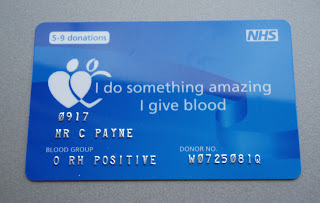After a day in Paris we were supposed to take a sleeper train to Barcelona and arrive the next day. Events turned out a little differently: -
- The 2 days before we left for France Kevin and Stuart spotted that SNCF (French rail workers) were going on strike and our train had been cancelled.
- Kevin booked an Easyjet fight to Barcelona and a hotel for one night.
- After our day and night in Paris we get to Paris Orly airport and find the flight had been cancelled as lots of airport workers could not get to work because the trains were on strike.
- We are standing in a queue for the Easyjet information desk when a rep tells us that there are no hotels rooms in Paris because of the rugby and no available seats to Barcelona for two days.
- We discuss the situation and decide our first priority is to get out of France.
- Stuart and I dash off to find an internet terminal.
- We find one but there is a guy using it to browse flickr.
- I leave Stuart to queue behind him and try to find another one.
- I find one, get Stuart and he goes to Easyjet.com to book us on the next flight to Madrid.
- He succeeds but I have to dash back to the others to get a pen and paper to note the booking ref as the terminal has no printer.
- Meanwhile Cate's friend is texting her times and prices of flights from Madrid to Barcelona.
- We fly to Madrid examine the departures board and pick some flights to Barcelona.
- We then queue at a couple of desks to find the best balance of cost and time for a flight to Barcelona ASAP.
- We pick one and I try to pay but my credit card is declined even though I have loads of credit so Julie pays. By this point we have paid an extra £250-£300 each.
- We take off from Madrid one hour and 20 minutes after landing.
- We arrive at Barcelona and catch a train to the part of the city containing our hotel.
- I get a voicemail from HSBC saying that they think my credit card was stolen by someone who used to try to buy flights from Madrid (AAAARGH).
- After an uphill walk with our bags through the dark streets of Barcelona we get to the hotel. It's about 21:00 and we are hengry and tired.
- THE HOTEL HAS NO RECORD OF OUR BOOKING AND IS FULL. BECAUSE OF A CONFERENCE EVERY HOTEL IN BARCELONA IS ALSO FULL.
- The man behind the desk (Alberto) says he will see what he can do and we sit down while Cate and Julie search the internet for anything from five start hotels to youth hostels with no luck. We are beginning to think we will spend the night on the streets.
- I clear up the HSBC misunderstanding and reactivate my credit card
- Alberto tells us that he has found us rooms in a hotel 20km's outside of town and they will pay for a taxi and the rooms. He offers us a meal while we wait.
- After dinner he tells us there was a mistake and the other hotel has no rooms after all. Cate and Julie continue searching the internet
- Alberto says that there have been a couple of no-shows and if they have not arrived by 23:00 he will call them and see if they are coming. If not we can have their rooms.
- The no-shows are not coming and the rooms are being cleaned and one of them is being converted into a triple.
- About midnight we have our rooms and are almost ready to hug Alberto in tears of gratitude. He is sweating and has a headache after 3 of the toughest hours of his career.
- Stuart discovers that although the hotel bar is closed they have a vending machine that sells beer.
- The next day our holiday in Barcelona begins it is fab and the sleeper train back to Paris is wonderful.
I have always hated air travel. I am not afraid of flying even in bad weather but I hate airports that are always full of stress, rushing and security checks followed by sitting on a cramped plane eating vile food and then the same stress at the destination with addition of hoping your luggage is in the same place as you and knowing you are still miles from where you want to be.
When we travelled from Barcelona to Paris we simply placed our bags on an x-ray machine, picked them up and got onto the train. A guy came to our private cabin to check our tickets. We relaxed before heading over to the dining car for a fantastic meal. I had the octopus followed by pork and apple in a mustard sauce accompanied by a very good beer. The food was cooked by a chef and served on china with real glasses and real metal knives and forks on real table linen. We then returned to our cabin to find the beds already made. We could lay in our beds reading a good book while the countryside rolled past the window. We woke up in France the next morning on our way to the centre of Paris with time to reurn to the dining car for breakfast . Because we left in the evening and arrived in the morning we got a great nights sleep and didn't waste any of our holiday time. This was my first journey in a sleeper train (something I have always wanted to do) and I loved the experience. It is more relaxing, more enjoyable, more environmentally friendly and more time effective. Learn more here. The difference in the journey to Barcelona and the journey to Paris really reminded me how much I hate flying.








